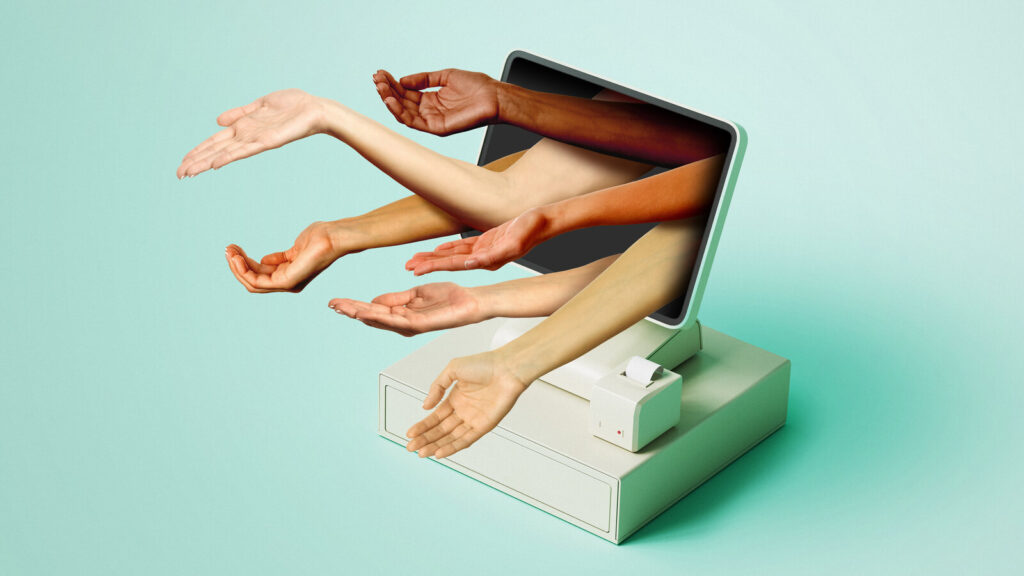
Tipping culture has become an ingrained part of many service industries, especially in countries like the United States, where it’s not just expected but often considered a necessity for workers to earn a livable wage. However, as tipping practices continue to spread across various sectors, some wonder if the tipping culture has reached its limit. Is there a point where tipping will no longer expand, or is it a trend that’s here to stay?
The tipping culture has evolved significantly over the years, expanding beyond traditional settings like restaurants and bars to include a wide range of services, from food delivery to beauty treatments and even online services. With this spread, there’s growing debate over whether tipping is still necessary or if it has become an overused and burdensome expectation on consumers. NYTIMES
Despite these concerns, the tipping culture shows no signs of slowing down. In fact, it seems more likely that tipping will continue to grow and become even more embedded in our daily lives. Let’s explore why tipping is still so prevalent and why it may continue to spread in the future.
The Evolution of Tipping Culture in Different Sectors
The origins of tipping culture can be traced back to the hospitality industry, where it was introduced as a way to reward good service. Over time, however, tipping has expanded into various other sectors, including personal services, transportation, and even digital services. This evolution has been driven by a combination of economic factors, social norms, and business practices.
In the hospitality industry, tipping was initially intended as a reward for exceptional service. However, it quickly became an expectation, and in some countries, like the United States, it has become a significant portion of workers’ incomes. This reliance on tips has led to the practice spreading to other sectors, where businesses can offer lower base wages and rely on customers to supplement their employees’ income through tips.
As the tipping culture expanded, it began to influence how we perceive service and compensation in other industries. For example, ride-sharing services like Uber and Lyft have integrated tipping into their apps, following customer demand and industry trends. Similarly, delivery services, baristas at coffee shops, and even hairdressers have all become part of the tipping landscape.
This spread of tipping has also been facilitated by the digital age. With the rise of apps and online platforms, it’s easier than ever for consumers to tip, often with just a few taps on their smartphones. The convenience of digital tipping has made it more likely for customers to tip in situations where they might not have before, further entrenching the practice in everyday life.
Social Expectations and the Pressure to Tip
One of the key factors driving the persistence of tipping culture is social pressure. In many cultures, tipping has become a social norm, with customers feeling obligated to tip even when service is mediocre or when they can’t afford it. This pressure can come from a variety of sources, including societal expectations, peer influence, and even the way businesses present tipping options to customers.
When tipping becomes expected, it can create a sense of guilt or anxiety for those who might prefer not to tip. This social pressure is often amplified by subtle cues, such as suggested tipping amounts on receipts or digital platforms. In some cases, businesses may also apply indirect pressure by reminding customers that tips are the primary source of income for workers, further reinforcing the expectation to tip.
The tipping culture is also sustained by the fear of social judgment. Many people tip because they don’t want to appear rude or cheap, especially in front of others. This fear of being judged can lead to tipping in situations where it might not have been considered necessary before, further perpetuating the cycle.
Moreover, tipping has become a way for customers to express appreciation, even in situations where it might not be expected. In a highly service-oriented culture, leaving a tip is seen as a way to acknowledge and reward the effort of workers, regardless of the industry. This reinforces the notion that tipping is not just about fulfilling an obligation but also about participating in a social contract that values service and hard work.
Why Tipping Is Likely Here to Stay
Despite the debates and criticisms surrounding the tipping culture, it’s unlikely that the practice will disappear anytime soon. There are several reasons why tipping is likely to remain a fixture in our society, and possibly even continue to expand.
First, the economic model that relies on tipping is deeply entrenched in many service industries. In countries like the United States, where tipped workers are paid below minimum wage, the tipping system serves as a critical component of workers’ income. Changing this system would require significant legislative and economic shifts, which are unlikely to happen overnight.
Second, the convenience of digital tipping has made it easier than ever to tip in a variety of situations. With the rise of contactless payments and tipping options integrated into apps, customers are more likely to leave tips, often without giving it much thought. This ease of tipping further normalizes the practice and encourages its spread to new sectors.
Finally, the social and cultural factors that support tipping are still strong. As long as there is an expectation to tip and a desire to reward good service, the tipping culture will continue to thrive. The sense of satisfaction that comes from acknowledging a job well done is a powerful motivator for many people, ensuring that tipping remains a common practice.
China Economy: Understanding the Obstacles to Reviving Growth
Antonio Maracas
